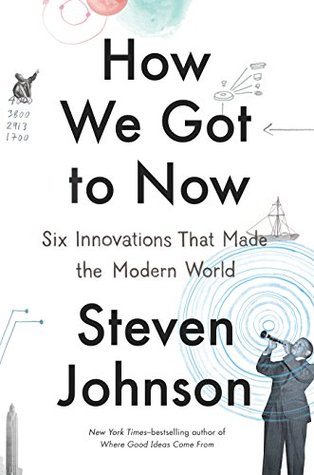More on this book
Community
Kindle Notes & Highlights
And that knowledge would plant the seed of an idea in his mind,
The history of global trade had clearly demonstrated that vast fortunes could be made by transporting a commodity that was ubiquitous in one environment to a place where it was scarce.
This was Tudor’s frugal genius: he took three things that the market had effectively priced at zero—ice, sawdust, and an empty vessel—and turned them into a flourishing business.
For ice to melt, it needs to pull heat from the surrounding environment to break the tetrahedral bonding of hydrogen atoms that gives ice its crystalline structure. (The extraction of heat from the surrounding atmosphere is what grants ice its miraculous capacity to cool us down.)
technique: the cooler you take on a picnic keeps your watermelon chilled because it is made of polystyrene chains interspersed with tiny pockets of gas. By 1815, Tudor had finally assembled the key pieces of the ice puzzle: harvesting, insulation,
Ice made a new kind of food network imaginable.
It was a classic case of a dominant industry disparaging a much more powerful new technology, the way the first computers with graphic interfaces were dismissed by their rivals as “toys” and not “serious business machines.”
Most discoveries become imaginable at a very specific moment in history, after which point multiple people start to imagine them.
When we think about breakthrough ideas, we tend to be constrained by the scale of the original invention. We figure out a way to make artificial cold, and we assume that will just mean that our rooms will be cooler, we’ll sleep better on hot nights, or there will be a reliable supply of ice cubes for our sodas. That much is easy to understand. But if you tell the story of cold only in that way, you miss the epic scope of it.
for the first time, some component of the physical world had been
by deliberately exploiting the malfunctions, turning noise and error into a useful signal. Every genuinely new technology has a genuinely new way of breaking—and every now and then, those malfunctions open a new door in the adjacent possible.
The march of technology has its own internal logic, but the moral application of that technology is up to us. We can decide to use ultrasound to save lives or terminate
This is one of those places where our basic sensibilities deviate from the sensibilities of our nineteenth-century ancestors.
New ways of measuring create new ways of making.
This is the full circle of clean: some of the most brilliant ideas in science and engineering in the nineteenth century helped us purify water that was too dirty to drink. And now, a hundred and fifty years later, we’ve created water that’s too clean to drink.
computer chips are masters of time discipline.
GPS determines your location by comparing clocks.
the more we build up these vast repositories of scientific and technological understanding, the more we conceal them. Your mind is silently assisted by all that knowledge each time you check your phone to see what time it is, but the knowledge itself is hidden from view. That is a great convenience, of course, but it can obscure just how far we’ve come since Galileo’s altar-lamp daydreams in the Duomo of Pisa.
Knowing what time it was turned that raw data into meaning.
Those waking moments at three a.m. are a kind of jet lag caused by artificial light instead of air travel.
spermaceti candles had become the most prized form of artificial light in America and Europe.
George Washington estimated that he spent $15,000 a year in today’s currency burning spermaceti candles.
some poor soul had to crawl around in a whale’s head for an afternoon.
This is one of the stranger twists in the history of extinction: because humans discovered deposits of ancient plants buried deep below the surface of the earth, one of the ocean’s most extraordinary creatures was spared.
150 years ago, reading after dark was a luxury. The
incandescent light
that glows when an electric current runs through it, some mechanism to keep the filament from burning out too quickly,
Joseph Swan had begun lighting homes and theaters a year
“vaporware”: He announced nonexistent products to
(His famous quip about invention being one percent inspiration and ninety-nine percent perspiration certainly holds true for his adventures in artificial light.)
he invented an entire system for inventing, a system that would come to dominate twentieth-century industry.


